An excellent plant for decorating garden plots is purple stonecrop, which has healing properties. The Latin name of the flower "Sedum" in translation means "subside", which once again confirms its healing power.
Material Content:
Varieties and types of plants
The species is represented by succulent plants of the family Crassulaceae with an erect stem, which is covered by alternate or oppositely arranged fleshy leaf plates of evil and purple colors. During flowering, which is observed in July - August, inflorescences of a corymbose form are formed from purple or yellow-green flowers.
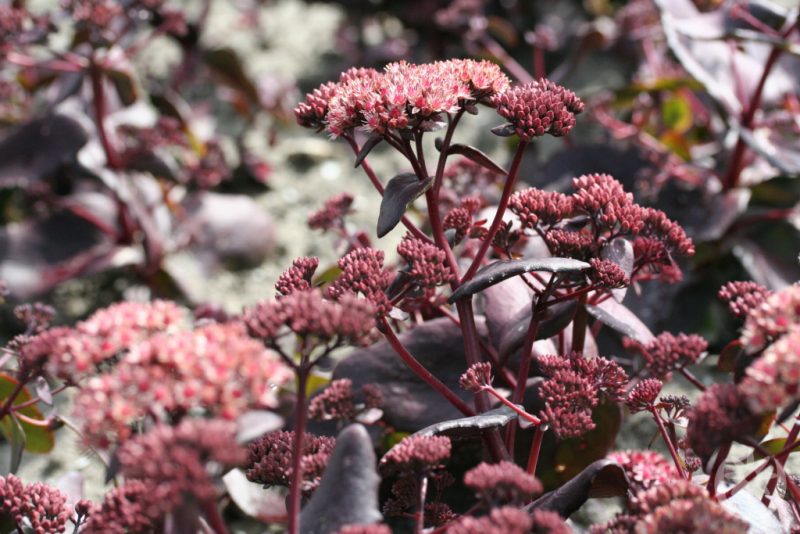
Stonecrop purple is used in cooking and traditional medicine.
Among the popular varieties stand out:
- "Purple Emperor" - a bright variety is distinguished by endurance and winter hardiness. Shoots reach a height of 40 cm and are covered with dark purple leaves. During flowering, pink inflorescences bloom.
- "Black Jack" - a plant with a height, as in the variety described above, and purple leaves with a bluish tint. Pink flowers are collected in flaps.
- "Strawberry and Cream" is a hybrid variety represented by plants with green leafy plates and reddish buds, in the open state acquiring a cream color.
- "Purple Carpet" - an elegant variety, characterized by plants up to 15 cm in height, which form a rug of carmine-pink color.
- "Picolette" - different red-bronze color of leaves with a metallic sheen.
Growing sedum from seeds
To obtain a good result, seed cultivation is carried out in the seedling method.
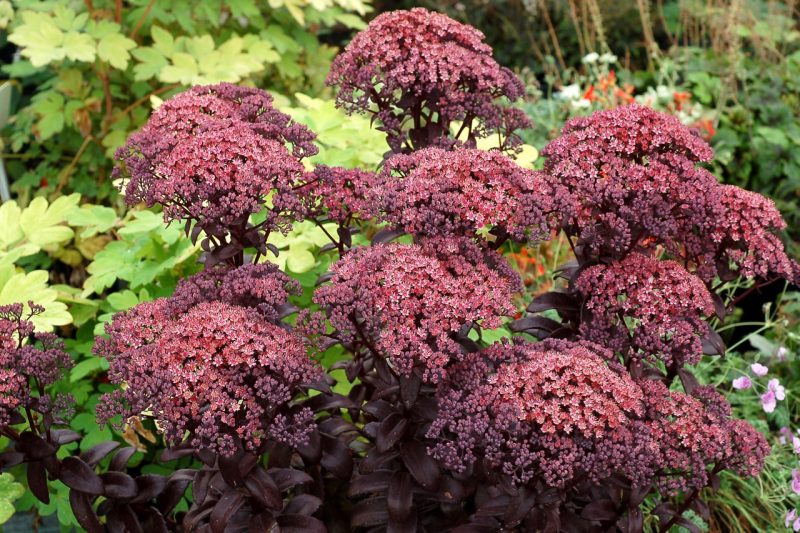
For this:
- In early spring, seed is laid out on moistened soil mixtures from garden soil and sand with an interval of 4 cm and is crushed by sand.
- The container with crops is covered with glass and rearranged in the refrigerator for stratification.
- After 2 weeks, during which the crops are ventilated and moistened, the container moves to a room with a temperature of 18 - 20 ° C.
- After emergence, the glass is removed.
- When the seedlings have 2 true leaves, the seedlings are placed in pots, where they are kept before planting in the garden.
- Before planting in open ground, seedlings are hardened.
Features of growing plants

In order for the plant to take root and become a permanent inhabitant of the garden, it is necessary to take into account a number of stonecrop requirements:
- Location and lighting. Sedum can grow in partial shade, but it realizes its full potential in sunny areas. When determining a perennial place, one should not forget that the plant will not be able to break through the litter of fallen leaves, so you can not plant it under deciduous trees or shrubs.
- Priming. Culture is not demanding on the soil composition and is able to take root even on stony lands. However, in order to obtain a lush, healthy plant, before planting, it is necessary to add compost or humus to the soil, increasing its fertility.
How and when to plant sedum?
Landing of purple purse in the front garden is carried out in the second half of May, when the risk of night frost return will disappear.

On the prepared site, seedlings are planted in holes made with a distance of 20 cm, which are then watered abundantly.
Outdoor Care
Caring for a decorative plant with medicinal properties does not cause much trouble, but involves the implementation of certain agricultural activities.
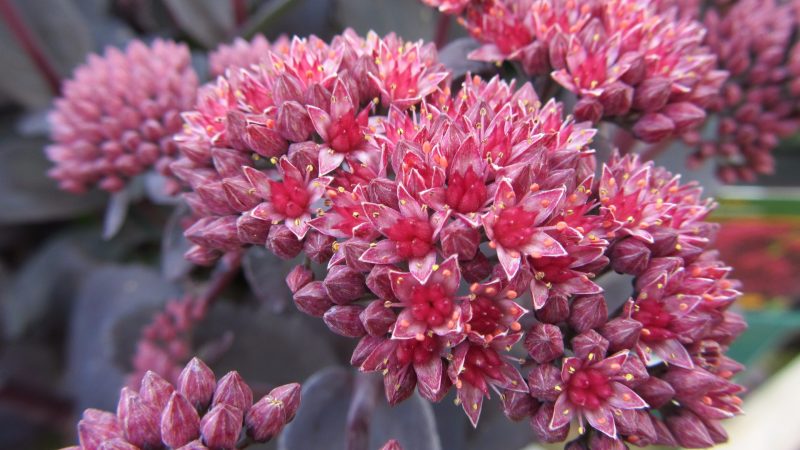
- Watering. Stonecrop purple is a drought tolerant crop. The gardener will need to water the beds only with prolonged drought or during periods of abnormally high temperatures.
- Loosening and weeding. The plant needs regular weeding, since its root system alone will not be able to cope with weeds. Due to the systematic nature of the procedure, the soil will remain constantly in a loose state.
- Fertilizing and fertilizers. To maintain decorativeness and create lush clearings, the flower should be provided with additional nutrition in the form of two top dressings. The first application of complex mineral fertilizers is carried out in the spring, and the second - after flowering. This is done to form immunity in the plant, allowing it to winter well. Attention! Manure for top dressing is not used
- Pruning. Maintaining decorativeness involves the removal of dried inflorescences and leaves as necessary. To prevent strong growth of shoots, they should be shortened.
Pest and Disease Treatment
Rainy weather is characterized by the development on the shoots of a stonecrop of purple gray rot, which must be controlled with copper-containing fungicides for large lesions according to the instructions.
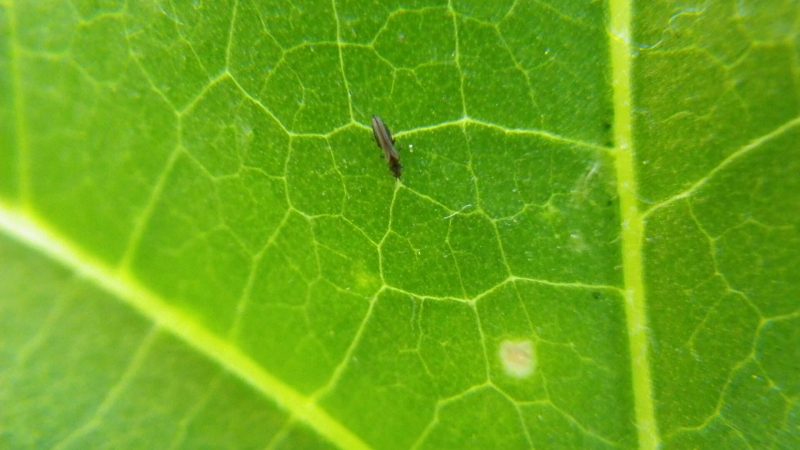
Of the pests in the sedum, aphids, pseudo-caterpillars and weevils can be observed. Actellic insecticide or its other analogues of systemic action acts as an effective protective agent.
Weevils can be eliminated manually by collecting them or shaking them at night on the soil covered with sheets of white paper.
Propagation of the plant by cuttings and division of the bush
Stonecrop with purple leaves, like with green leaves, is propagated not only by the seed method, but also by the vegetative one, which is simpler to execute and allows you to save varietal characters.
Cuttings
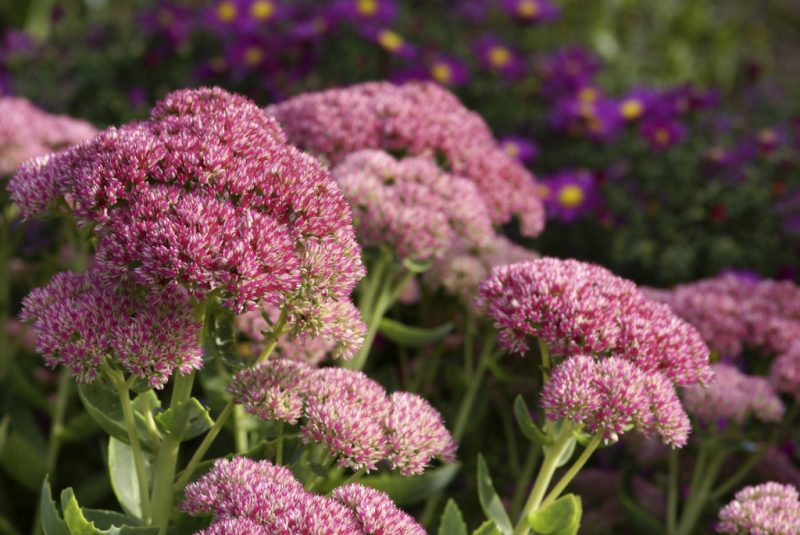
A popular technique in which:
- With the advent of autumn, several shoots from an adult plant are cut off and placed in a vase.
- During the autumn-winter period, water is systematically updated.
- By spring, the vase will have a whole bunch of rooted cuttings, ready for planting in open ground.
Also, rooting can be carried out directly in a constant place of growth, which will be cleared of weeds and fertilized. Cuttings at an angle penetrate into the garden soil mixed with sand, and slightly pressed. The survival rate is from 70 to 100%.
Bush division
If the garden has a four-year bush, then the grower can divide it. In spring, the rhizome is removed, cleaned of soil residues and divided into parts, each of which must have roots and buds of growth. Delenki are dried in the air for several hours, and then they are seated in prepared wells.
Use of stonecrop in traditional medicine
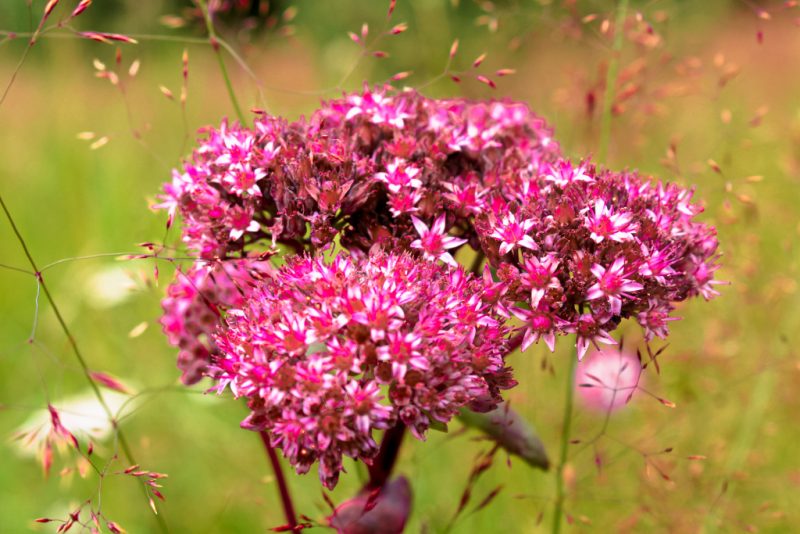
Due to its medicinal qualities, purple stonecrop is often used in folk medicine:
- treats gastrointestinal and heart diseases;
- fights chronic liver diseases;
- tones up the body.
The raw materials for the preparation of various tinctures and potions are the shoots themselves and the juice from a freshly cut plant. To obtain it, the grass is poured with boiling water and passed through a meat grinder. The resulting mass is squeezed out, and the liquid is filtered.
As for drying, since the leaves of succulents are difficult to dry in a freshly cut form, it is recommended to scald them before starting the procedure.
When the healing foundation is obtained, you can begin to prepare the tincture: 5 g of dried stonecrop are filled with 250 ml of boiling water. After 2 hours, it can be taken orally before meals, half a stack 3 times a day.
Thus, the stonecrop purple, which can often be seen in the form of bright clearings on alpine slides or green lawns, is an undemanding home doctor. Even a completely inexperienced gardener can take care of it.












